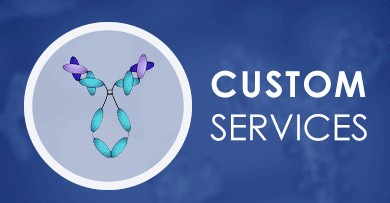+ Filter
 Loading...
Loading...

SCARB2
 Loading...
Loading...Anti-SCARB2 Products
-
- Species Reactivity: Mouse
- Type: Rabbit IgG
- Application: IHC-P, FC, ICC, IF
-
- Derivation: Hybridoma cell line
- Species Reactivity: Human
- Type: Mouse IgG2a
- Application: ELISA, Block, Inhib
- Mouse Anti-SCARB2 Antibody (clone JL2), mRNA (PABS-0248-mRNA)
-
- Species Reactivity: Human
-
- Species Reactivity: Human
- Target: SCARB2
- Host Animal: Mouse
- Application: Block, ELISA, FC, Cell-uptake
- Anti-Mouse SCARB2 Immunohistochemistry Kit (VS-0525-XY6367)
-
- Species Reactivity: Mouse
- Target: SCARB2
- Application: IHC
- Anti-Rat SCARB2 Immunohistochemistry Kit (VS-0525-XY6368)
-
- Species Reactivity: Human, Mouse, Rat
- Target: SCARB2
- Application: IHC
- Anti-Monkey SCARB2 Immunohistochemistry Kit (VS-0525-XY6369)
-
- Species Reactivity: Human, Mouse, Rat, Monkey
- Target: SCARB2
- Application: IHC
-
- Derivation: Phage display library screening
- Species Reactivity: Mouse, Rat, Human
- Type: IgG
- Application: WB, FC, IP, IHC-P
View More Products
Can't find the products you're looking for? Try to filter in the left sidebar.Filter By Tag
More Infomation
Our customer service representatives are available 24 hours a day, from Monday to Sunday. Contact Us
For Research Use Only. Not For Clinical Use.
Background
The protein encoded by this gene is a type III glycoprotein that is located primarily in limiting membranes of lysosomes and endosomes. Earlier studies in mice and rat suggested that this protein may participate in membrane transportation and the reorganization of endosomal/lysosomal compartment. The protein deficiency in mice was reported to impair cell membrane transport processes and cause pelvic junction obstruction, deafness, and peripheral neuropathy. Further studies in human showed that this protein is a ubiquitously expressed protein and that it is involved in the pathogenesis of HFMD (hand, foot, and mouth disease) caused by enterovirus-71 and possibly by coxsackievirus A16. Mutations in this gene caused an autosomal recessive progressive myoclonic epilepsy-4 (EPM4), also known as action myoclonus-renal failure syndrome (AMRF). Alternatively spliced transcript variants encoding different isoforms have been found for this gene.
Protein class
Disease related genes, Human disease related genes, Potential drug targets, Transporters
Predicted location
Membrane
Single cell type specificity
Low cell type specificity
Immune cell specificity
Group enriched (plasmacytoid DC, intermediate monocyte, non-classical monocyte, classical monocyte, basophil, myeloid DC)
Cell line specificity
Cell line enhanced (ASC diff)
Interaction
Interacts with GBA. (Microbial infection) Interacts with enterovirus 71 capsid proteins VP1 and VP2.
Molecular function
Host cell receptor for virus entry, Receptor
More Types Infomation



